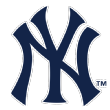Trade grades: Did Yankees ace Giancarlo Stanton deal?
— -- The deal: The Marlins trade OF Giancarlo Stanton?(and his contract) to the Yankees for 2B Starlin Castro and two minor leaguers, P Jorge Guzman and SS Jose Devers. The Yankees will reportedly take on $265 million of Stanton's remaining $295 million in salary.?
 Why it's a good deal for the Yankees: Merry Christmas, baseball fans! Depending on how you feel about the Yankees, this is either the biggest lump of coal in your baseball stocking since the Yankees acquired Alex Rodriguez, or a better present than a Red Ryder BB gun. I am pretty sure Dave Dombrowski just threw up.
Why it's a good deal for the Yankees: Merry Christmas, baseball fans! Depending on how you feel about the Yankees, this is either the biggest lump of coal in your baseball stocking since the Yankees acquired Alex Rodriguez, or a better present than a Red Ryder BB gun. I am pretty sure Dave Dombrowski just threw up.
This is a trade of potential epic and season-altering scale, at least based on Stanton's 2017 level of performance that netted him the National League MVP award after hitting 59 home runs. Pairing him with Aaron Judge gives the club not just a dynamic offensive duo, but a physically imposing tandem that will be must-watch TV. Get to the park early to catch batting practice when the Yankees come to town.
Judge ranked second in the majors in OPS in 2017 at 171 while Stanton ranked fourth at 165. They ranked first and second in home runs -- Judge hit 52 -- so they would have a chance to become the sixth pair of teammates to combine for 100 home runs:
Having two teammates with a 160 OPS or better would also be pretty rare. In the wild-card era since 1995, it has happened just eight times, the most recent being the 2011 Brewers with Ryan Braun and Prince Fielder. Stanton should also benefit from moving from Marlins Park -- the seventh-toughest home run in park 2017, according to the "The Bill James Handbook" -- to Yankee Stadium, the second-easiest home run park. Stanton doesn't go to the opposite field as much as Judge, with 11 home runs to right field in 2017, and most of his home runs go so far that it may not matter which park he plays in (he hit 31 of his 59 home runs at home).
Where does Stanton play, with Judge lodged in right field? Since the Yankees don't have a full-time designated hitter on the roster, they can essentially rotate Judge, Stanton, Brett Gardner and Aaron Hicks between the outfield and DH. Stanton can play right and left; Gardner can play left and center. It gives new manager Aaron Boone the flexibility to rest players and give their legs a day off. Jacoby Ellsbury is the big loser as he becomes a very expensive bench player unless the Yankees can trade him. Prospect Clint Frazier spends the year in Triple-A (which he needs) or becomes trade bait for pitching help.
This trade also means you can forget about Bryce Harper joining the Yankees in 2019. From a financial take, trading for Stanton will cost less than trading for Harper, who could receive a $400 million contract in free agency. You can debate the merits of the two players, and Harper is younger, but you can understand the Yankees' reasoning that trading for Stanton is the better move -- a similar player for a lot less money. And just thinking out loud here: The Yankees can move top prospect Gleyber Torres to second base to replace Castro and then go after Manny Machado to play third base in 2019.
Of course, Stanton isn't risk-free. Stanton had his best season in 2017 not simply because he changed his stance in June, when he went on his legendary tear. He was also healthy, playing 159 games after averaging 115 the previous five seasons. Getting him 50 or 60 games a season at DH could help in that regard. Also, playing in New York won't be the same as playing in Miami. The expectations will now be World Series or bust. If he goes three games without a home run, the media will be asking him about his slump. The whole "playing in New York" thing is overplayed, but the added a pressure is at least a small consideration to think about.
The other scenario is that if Stanton does have three great seasons he may opt out after 2020. If he's hurt and plays poorly, he stays and the Yankees could be stuck with a bad contract. On the other hand, getting three great seasons from Stanton and then seeing him leave isn't a worst-case scenario, since the Yankees didn't give up a lot of talent in this deal. That's down the road. For now, the Yankees have the most imposing middle of the order in the game. Good luck, AL East.
Yankees grade: A
 Why it's a good deal for the Marlins: Look, this trade wasn't about acquiring talent for the Marlins. It was about dumping Stanton's contract, and that's what Derek Jeter managed to do. Castro is signed for two more years at about $22.6 million, plus a 2020 team option for $16 million. His salary basically replaces Dee Gordon's, although Gordon is the better player. Castro has been worth 4.0 WAR over the past three seasons compared to 8.7 for Gordon. Castro may not even stay here. It wouldn't be surprising to see the Marlins turn right around and flip him for something less expensive.
Why it's a good deal for the Marlins: Look, this trade wasn't about acquiring talent for the Marlins. It was about dumping Stanton's contract, and that's what Derek Jeter managed to do. Castro is signed for two more years at about $22.6 million, plus a 2020 team option for $16 million. His salary basically replaces Dee Gordon's, although Gordon is the better player. Castro has been worth 4.0 WAR over the past three seasons compared to 8.7 for Gordon. Castro may not even stay here. It wouldn't be surprising to see the Marlins turn right around and flip him for something less expensive.
The two prospects are lottery tickets. Guzman pitched for Class A Staten Island and struck out 88 in 66.2 innings, firing fastballs in the upper 90s and hitting 100. Devers, the cousin of Red Sox third baseman Rafael Devers, just turned 18 and hit .246 in the Gulf Coast League.
In giving the Yankees $30 million and taking on at least $23.6 million in Castro's salary, the Marlins weren't able to trade the entire $295 million they owed Stanton, and that has to be disappointing. Fans won't like that Jeter traded Stanton to his former employer, but that's the power Stanton held with his no-trade clause. The Marlins' hands were obviously tied. Marlins fans may view the new owners as no different from the old owners, but the bottom line is that Stanton's contract, with his health history, was a potential huge burden for the franchise. And it's not like they made the playoffs, even with Stanton hitting 59 bombs. It's not fun to trade a marquee player like Stanton, but it had to be done.
Marlins grade: B